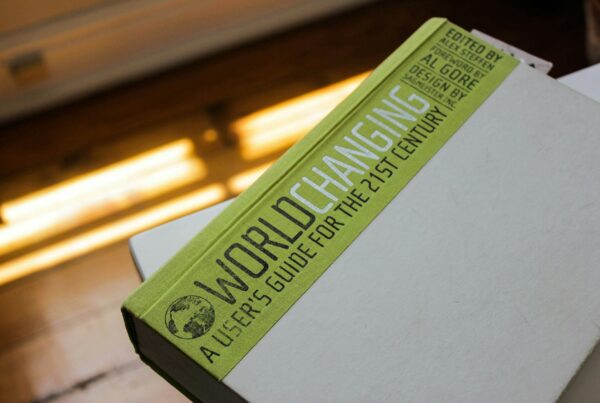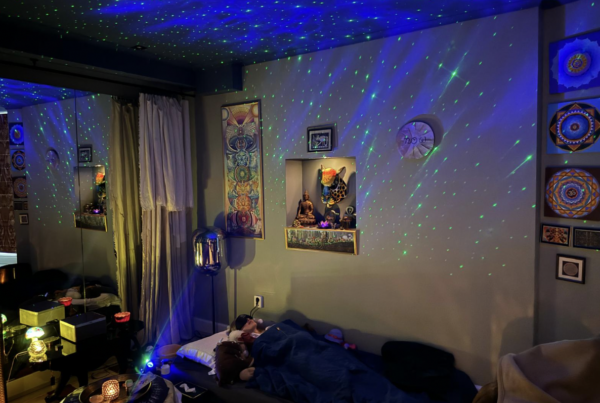
I recently had a conversation with my former closest friend I have known since forever. She told me about her trauma rooted in adverse childhood experiences (ACEs), involving her family and, according to her, reflecting unresolved transgenerational wounds. I aimed to understand her story by educating myself about trauma and came across Gabor Maté, an expert on trauma, addiction, stress, and childhood development. His book, ’The Myth of Normal’, addresses societally conditioned illnesses and portrays trauma from a socio-developmental perspective, thereby gifting me with several insights helping me to understand my friend.
I recently had a conversation with my former closest friend I have known since forever. She told me about her trauma rooted in adverse childhood experiences (ACEs), involving her family and, according to her, reflecting unresolved transgenerational wounds. I aimed to understand her story by educating myself about trauma and came across Gabor Maté, an expert on trauma, addiction, stress, and childhood development. His book, ’The Myth of Normal’, addresses societally conditioned illnesses and portrays trauma from a socio-developmental perspective, thereby gifting me with several insights helping me to understand my friend.

Photo by Sarah Laszlo

Photo by Sarah Laszlo
I learned that after an event with traumatic sequelae, after effects of injury for example (Webster, 2022), the perception of yourself and the world can change drastically, reflected in cognitive distortions causing negative thinking patterns. But what exactly is trauma, how does it relate to intra-and interpersonal perception, and which approaches favor its healing?
Trauma is defined as the lasting response after a distressing event (CAMH, n.d.), specifically, a wound that is inflicted as a result of an unbearably overwhelming event for the nervous system, thereby demarcating the line between stressful events and events with traumatic sequelae. Specifically, difficult life events are eventually overcome through grieving, allowing the organism to process difficult emotions. However, when it comes to events with traumatic sequelae, the emotional stress and pain is imprinted into the nervous system, due to a lack of grief, resulting in blocked emotions, something often associated with poor social support. According to Quirke (2022), the body subsequently re-experiences or “remembers” the original event as a consequence of post-traumatic triggers associated with specific sensory fragments perceived during the original event. Consequently, it increases hypervigilance given decreased tolerance of potentially frightening stimuli. Further, irrational beliefs associated with the trauma, specifically negative and automatic thinking patterns, potentially give rise to post-traumatic stress responses in the long term (PTSD). These involve alertness, reliving fragments of the event, avoidance aspects, rigid beliefs and physical effects (Mind, 2021). These include chronic stressors impacting immune system functioning.
“the indicated stressful event is not defined as a negative event occurring, but a lack of a positive event, a lack of validation and connection”
Delving into the development and maintenance of (C)PTSD symptoms, it is crucial to acknowledge the key role of cognitions. Specifically, as trauma challenges core life assumptions (SAMHSA, 2014), social-cognitive models of PTSD suggest four main irrational belief processes (Hyland, et al. 2013) to be involved in the development and maintenance of PTSD. However, their degree of causality and manifestation of trauma remain uncertain and are assumed to be closely intertwined. These irrational belief processes form a lens that distorts our perception of the world and include beliefs dictating how things ought to be, negative evaluations of unpleasant life events and their interpretation as unbearable, and lastly beliefs reflecting global negative evaluations. The belief systems get activated during specific post-traumatic events, which then bias information processing towards threatening stimuli (Hyland et. al, 2013; Pezo, 2021). This results in a restrained range of action given automatic defensive reactions limiting response flexibility (Maté, 2022). For example, my friend told me about a decisive situation in which she felt invalidated by a close friend (post-traumatic trigger) and witnessed her armour of negative beliefs immediately putting itself on her body. It absorbed and shut her down, leaving her with this unbearable feeling with no room for doubt.
One innovative approach called cognitive bias modification (CBM) focuses on modifying information-processing biases hitherto favoring threatening interpretations of events. By presenting patients with ambiguous scenarios, negative biases are modified through strengthening non-threatening interpretations and diminishing threatening ones (de Klein et. al, 2019). In short, information-processing modification seems a clear-cut treatment for trauma-related cognitive distortions impacting evaluation and perception of ourselves and the world.
“feeling heard and understood by ourselves is crucial in order to let go of memories of loneliness and anxiety as feelings of abandonment in early childhood”
However, besides targeting cognitive aspects involved in trauma, it seems essential to consider fundamental features giving rise to C-PTSD rooted in childhood/adolescence emotional neglect. As proposed by the compassion-focused approach, to increase the ability to self-soothe and reduce a critical self-concept (Rushforth et al., 2014), the connection to “the inner child” by means of a compassionate conversation and dialogue to our inner selves is crucial (Stahl, 2015). Specifically, feeling heard and understood by ourselves is crucial in order to let go of memories of loneliness and anxiety as feelings of abandonment in early childhood (Sutton, 2022). Given distorted cognitions and negative thinking patterns such as a negative self-perception, the loss of compassion for oneself is not far-fetched. Additionally, considering the emotional disconnection from our caregiver and inevitably from ourselves, (re)connection to the difficult emotions and wounds in question seems healing, in favor of restoring authenticity. The dialogue with our inner emotions and feelings, allowing grief about the lost connection and emotions to arise and to be cherished, presents the converse of trauma (Maté, 2022). Importantly, it is neither about denial nor over-identification, but about acceptance, validation, and grief to eventually move forward.
Reading Maté’s book has definitely helped me acknowledge my friend’s experiences, but it also showed me how much is left to understand, let alone to discover. Among other things, it eventually led me to pursue the clinical developmental specialization to learn about the multiple involved variables in intergenerational (relational) trauma transmittal, associated risk and protective factors and how, most importantly, prevention can eventually be informed by that.
To my former, hopefully, one day again, closest friend, my inner child. <<
References
– CAMH. (n.d.). Trauma. https://www.camh.ca/en/health-info/mental-illness-and-addiction-index/trauma
– de Kleine, R. A., Woud, M. L., Ferentzi, H., Hendriks, G. J., Broekman, T. G., Becker, E. S., & Van Minnen, A. (2019). Appraisal-based cognitive bias modification in patients with posttraumatic stress disorder: A randomised clinical trial. European Journal of Psychotraumatology, 10(1). https://doi.org/10.1080/20008198.2019.1625690
– Hyland, P., Shevlin, M., Adamson, G., & Boduszek, D. (2013). The role of trauma-specific irrational beliefs and sociodemographic risk factors in posttraumatic stress responses. Journal of Rational-Emotive & Amp; Cognitive-Behavior Therapy, 31(3). https://doi.org/10.1007/s10942-013-0167-y
– Maté, G. (2022). The myth of normal: Trauma, illness, and healing in a toxic culture. Avery.
– NHS (2022). Complex PTSD – Post-traumatic stress disorder. nhs.uk. https://www.nhs.uk/mental-health/conditions/post-traumatic-stress-disorder-ptsd/complex/
– Pezo, V. (2021). Cognitive distortions and trauma. Vanessa Pezo, LCSW. https://www.longbeachtraumatherapy.com/blog/cognitivedistortionsandtrauma
– Post-traumatic stress disorder. (2021). Mind. https://www.mind.org.uk/information-support/types-of-mental-health-problems/post-traumatic-stress-disorder-ptsd-and-complex-ptsd/symptoms/
– Quirke, M.F.T. (2022). How does your body remember trauma? https://michaelgquirke.com/how-does-your-body-remember-trauma/
– Rushforth, A., Kotera, Y., Kaluzeviciute, G. (2022). Theory paper: Suggesting compassion-based approaches for treating complex post-traumatic stress disorder. International Journal of Mental Health and Addiction. https://link.springer.com/article/10.1007/s11469-022-00856-4
– Sequela. (2022). The Merriam-Webster.com Dictionary. https://www.merriam-webster.com/dictionary/sequela
– Stahl, S. (2015). Das Kind in dir muss Heimat finden: Der Schlüssel zur Lösung (fast) aller Probleme (German Edition). Kailash.
– Substance Abuse and Mental Health Services Administration (SAMHSA). (2014). Trauma- informed care in behavioral health services (No.57).
– Sutton, J., PhD. (2022, December 28). Inner child healing: 35 practical tools for growing beyond your past. PositivePsychology.com. https://positivepsychology.com/inner-child-healing/
I learned that after an event with traumatic sequelae, after effects of injury for example (Webster, 2022), the perception of yourself and the world can change drastically, reflected in cognitive distortions causing negative thinking patterns. But what exactly is trauma, how does it relate to intra-and interpersonal perception, and which approaches favor its healing?
Trauma is defined as the lasting response after a distressing event (CAMH, n.d.), specifically, a wound that is inflicted as a result of an unbearably overwhelming event for the nervous system, thereby demarcating the line between stressful events and events with traumatic sequelae. Specifically, difficult life events are eventually overcome through grieving, allowing the organism to process difficult emotions. However, when it comes to events with traumatic sequelae, the emotional stress and pain is imprinted into the nervous system, due to a lack of grief, resulting in blocked emotions, something often associated with poor social support. According to Quirke (2022), the body subsequently re-experiences or “remembers” the original event as a consequence of post-traumatic triggers associated with specific sensory fragments perceived during the original event. Consequently, it increases hypervigilance given decreased tolerance of potentially frightening stimuli. Further, irrational beliefs associated with the trauma, specifically negative and automatic thinking patterns, potentially give rise to post-traumatic stress responses in the long term (PTSD). These involve alertness, reliving fragments of the event, avoidance aspects, rigid beliefs and physical effects (Mind, 2021). These include chronic stressors impacting immune system functioning.
“the indicated stressful event is not defined as a negative event occurring, but a lack of a positive event, a lack of validation and connection”
The distinction between single events and long-lasting repetitive events is crucial to further identify a novel clinical condition called C-PTSD (complex trauma) beyond the core PTSD symptom profile (NHS, 2022). Complex trauma commonly develops following interpersonal and highly stressful long-lasting events, often associated with ACE’s during child development including childhood/adolescence emotional neglect. These are frequently observed as the outcome of transgenerational unresolved wounds, such as adults unintentionally inflicting wounds on their children due to their own unresolved issues. Hence, according to Maté (2022), the indicated stressful event is not defined as a negative event occurring, but a lack of a positive event, a lack of validation and connection. In this case, two basic human needs can collide and conflict in childhood/adolescence, namely attachment and authenticity (the need to be attuned with one’s emotions). Authenticity may remain unfulfilled as a consequence of the suppression of uncomfortable emotions to stay attached (Maté, 2022), which can result in ACE being expressed in loss of sense of self, feelings of worthlessness, shame and guilt, emotional dysregulation, perceived disconnection from loved ones, and relational problems (NHS, 2022). In this context, my friend told me she perceived that conflict to be precisely the essence of her trauma: The unbearable and paralyzing perception of not being able to escape the emotional pain of feeling misunderstood in her familial environment in early adolescence, causing her to feel disconnected from loved ones and herself into adulthood, unable to tolerate perceived emotional discontinuity in close relationships.
Delving into the development and maintenance of (C)PTSD symptoms, it is crucial to acknowledge the key role of cognitions. Specifically, as trauma challenges core life assumptions (SAMHSA, 2014), social-cognitive models of PTSD suggest four main irrational belief processes (Hyland, et al. 2013) to be involved in the development and maintenance of PTSD. However, their degree of causality and manifestation of trauma remain uncertain and are assumed to be closely intertwined. These irrational belief processes form a lens that distorts our perception of the world and include beliefs dictating how things ought to be, negative evaluations of unpleasant life events and their interpretation as unbearable, and lastly beliefs reflecting global negative evaluations. The belief systems get activated during specific post-traumatic events, which then bias information processing towards threatening stimuli (Hyland et. al, 2013; Pezo, 2021). This results in a restrained range of action given automatic defensive reactions limiting response flexibility (Maté, 2022). For example, my friend told me about a decisive situation in which she felt invalidated by a close friend (post-traumatic trigger) and witnessed her armour of negative beliefs immediately putting itself on her body. It absorbed and shut her down, leaving her with this unbearable feeling with no room for doubt.
“feeling heard and understood by ourselves is crucial in order to let go of memories of loneliness and anxiety as feelings of abandonment in early childhood”
One innovative approach called cognitive bias modification (CBM) focuses on modifying information-processing biases hitherto favoring threatening interpretations of events. By presenting patients with ambiguous scenarios, negative biases are modified through strengthening non-threatening interpretations and diminishing threatening ones (de Klein et. al, 2019). In short, information-processing modification seems a clear-cut treatment for trauma-related cognitive distortions impacting evaluation and perception of ourselves and the world.
However, besides targeting cognitive aspects involved in trauma, it seems essential to consider fundamental features giving rise to C-PTSD rooted in childhood/adolescence emotional neglect. As proposed by the compassion-focused approach, to increase the ability to self-soothe and reduce a critical self-concept (Rushforth et al., 2014), the connection to “the inner child” by means of a compassionate conversation and dialogue to our inner selves is crucial (Stahl, 2015). Specifically, feeling heard and understood by ourselves is crucial in order to let go of memories of loneliness and anxiety as feelings of abandonment in early childhood (Sutton, 2022). Given distorted cognitions and negative thinking patterns such as a negative self-perception, the loss of compassion for oneself is not far-fetched. Additionally, considering the emotional disconnection from our caregiver and inevitably from ourselves, (re)connection to the difficult emotions and wounds in question seems healing, in favor of restoring authenticity. The dialogue with our inner emotions and feelings, allowing grief about the lost connection and emotions to arise and to be cherished, presents the converse of trauma (Maté, 2022). Importantly, it is neither about denial nor over-identification, but about acceptance, validation, and grief to eventually move forward.
Reading Maté’s book has definitely helped me acknowledge my friend’s experiences, but it also showed me how much is left to understand, let alone to discover. Among other things, it eventually led me to pursue the clinical developmental specialization to learn about the multiple involved variables in intergenerational (relational) trauma transmittal, associated risk and protective factors and how, most importantly, prevention can eventually be informed by that.
To my former, hopefully, one day again, closest friend, my inner child. <<



